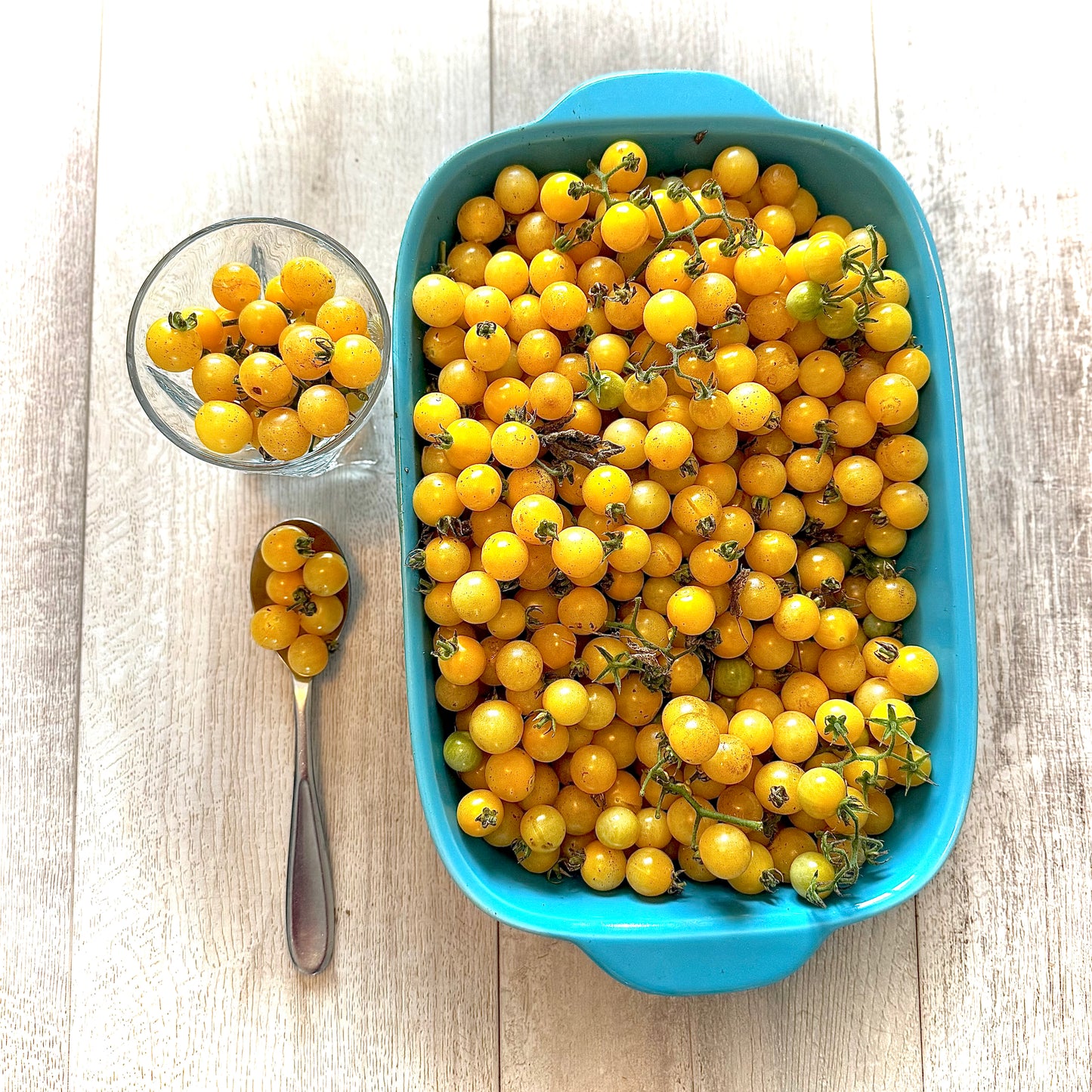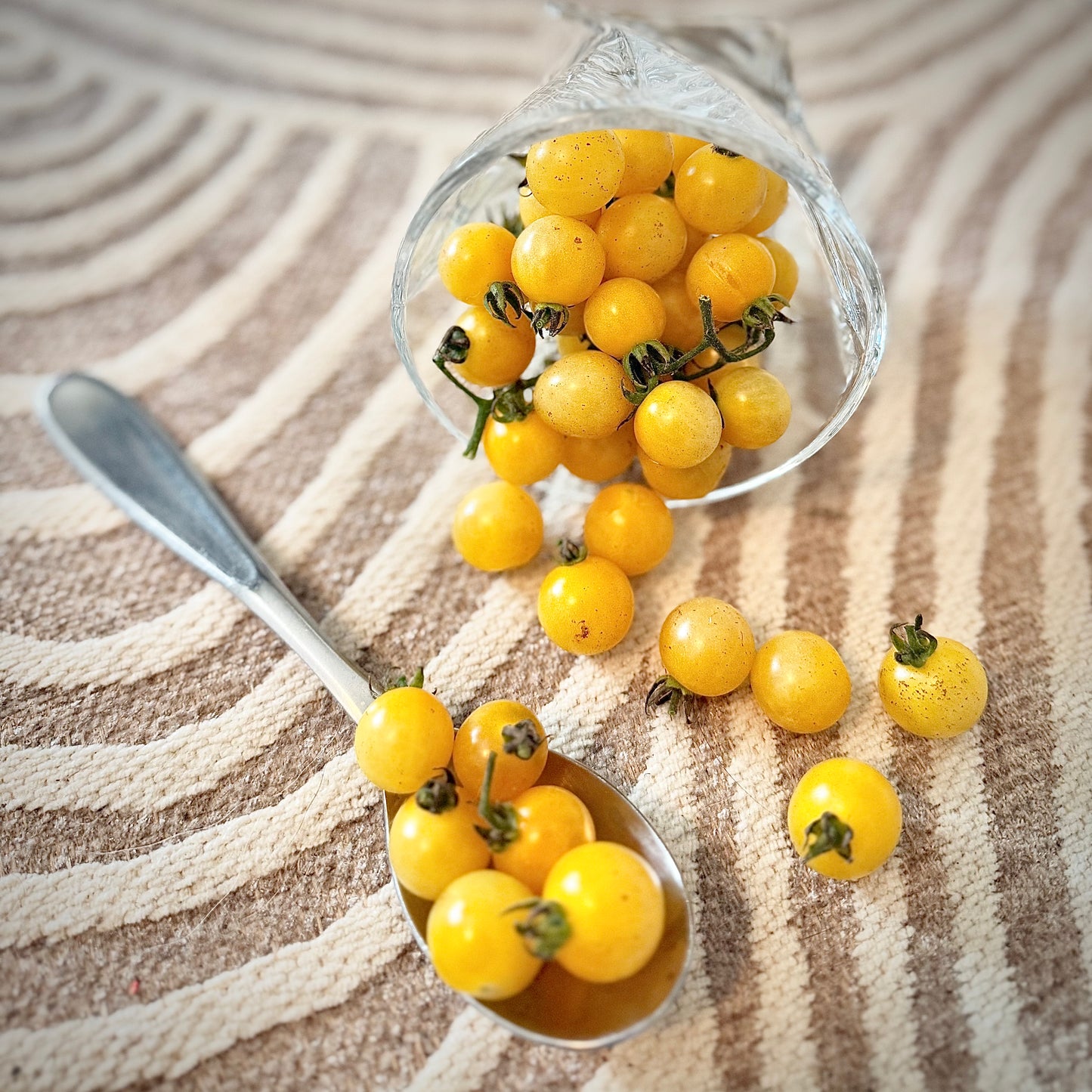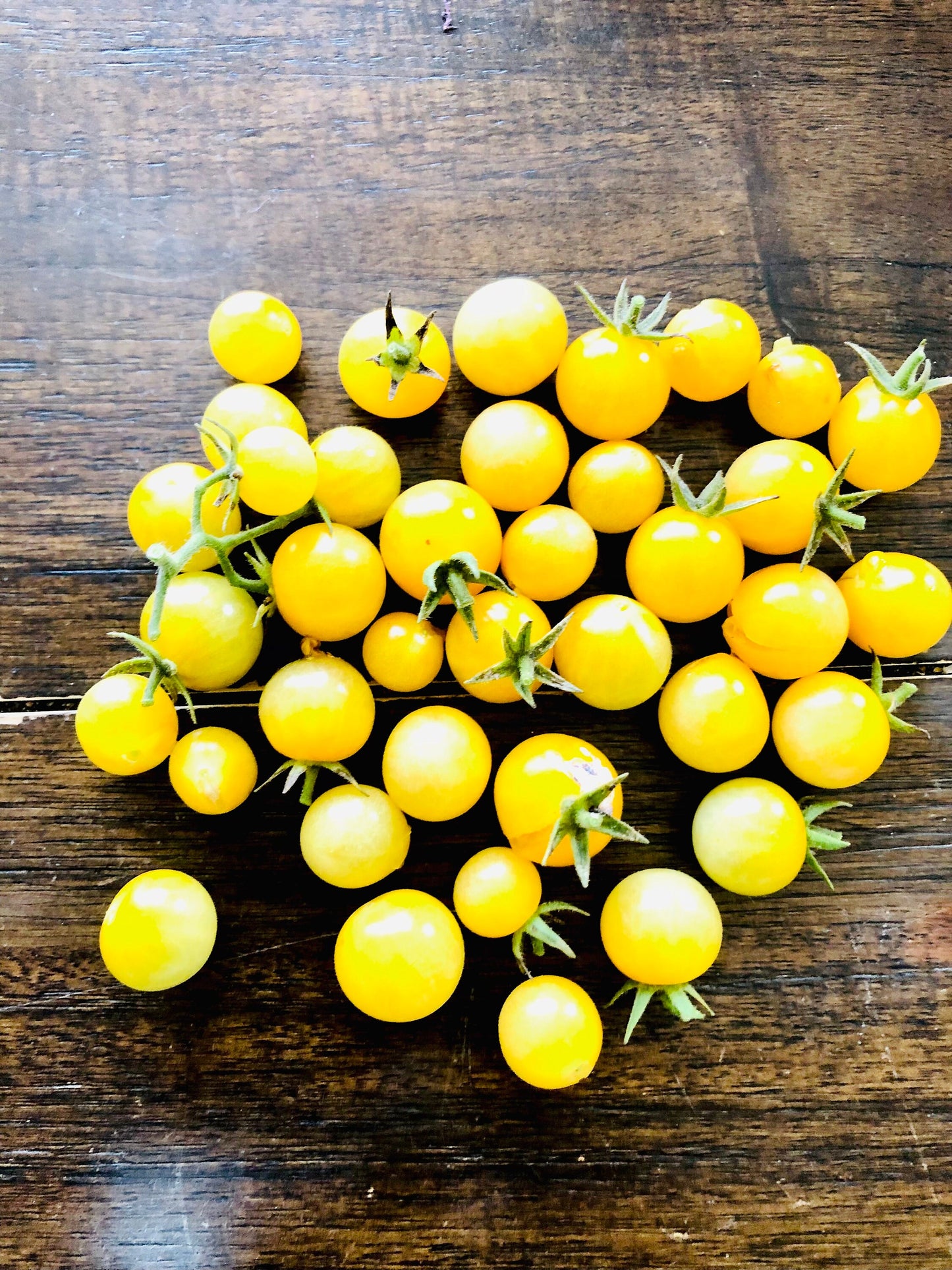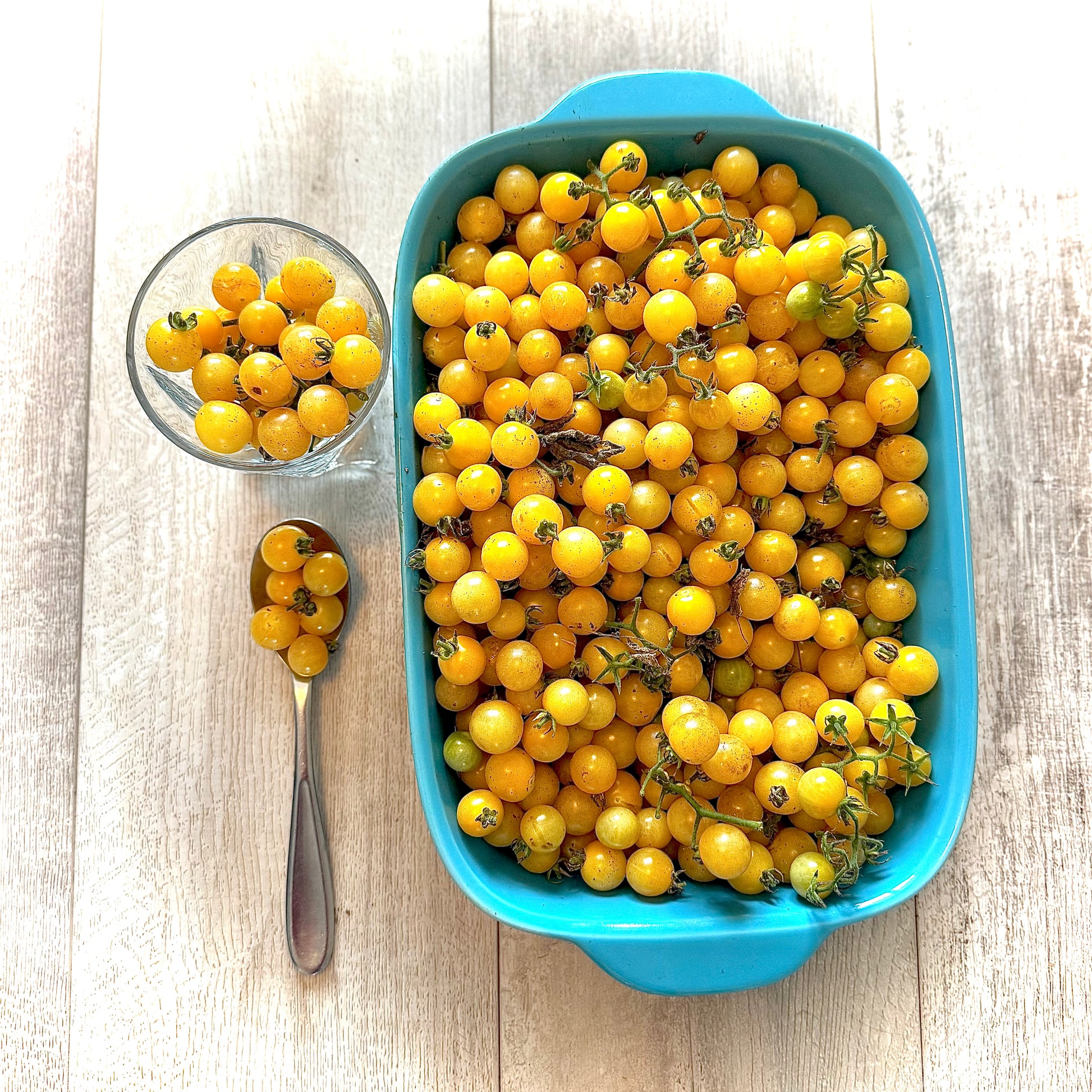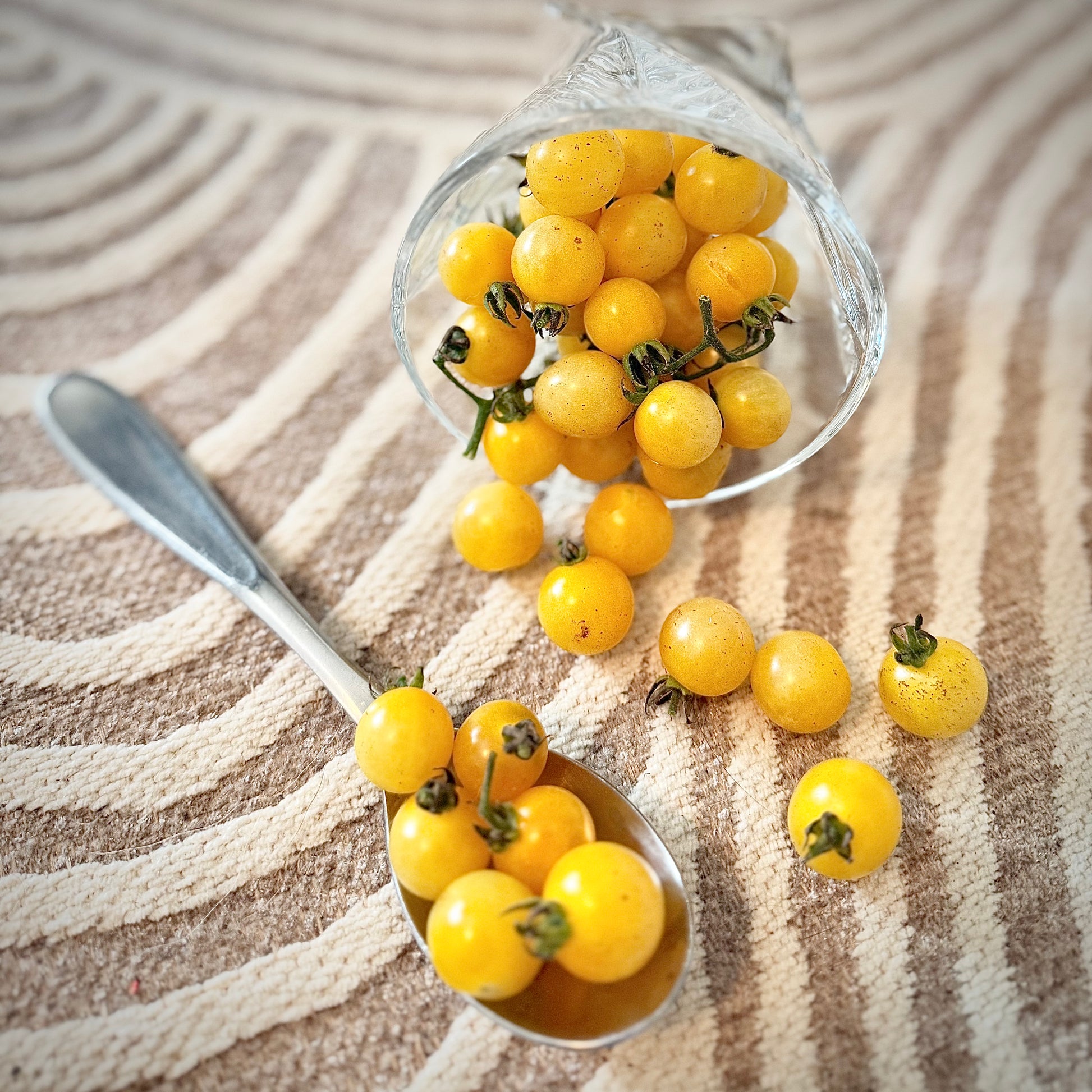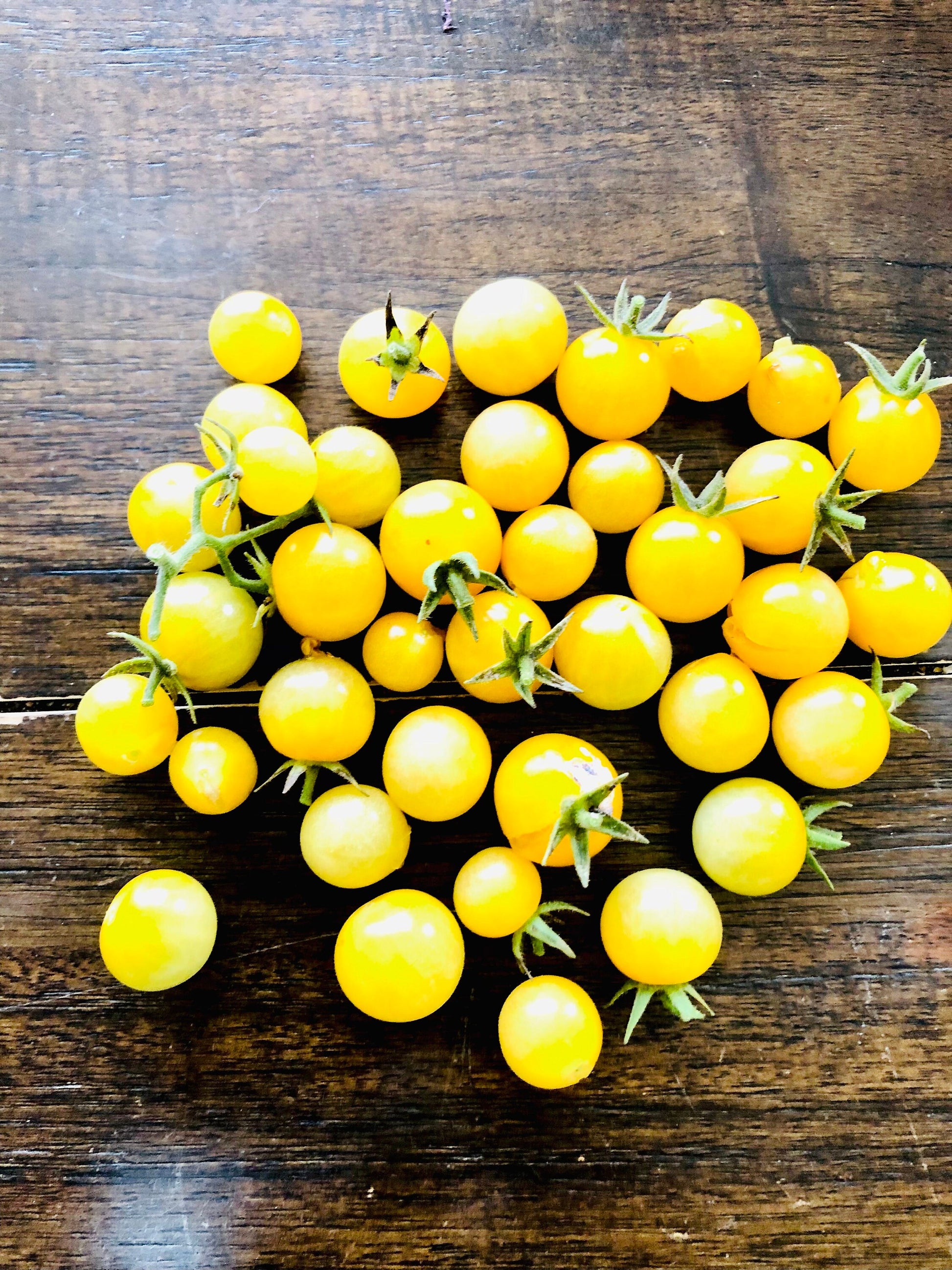Tomato - White Currant
Tomato - White Currant
5.0 / 5.0
(1) 1 total reviews
Couldn't load pickup availability
Minimum Seed Count: 15
The White Currant tomato is one of the tiniest tomato varieties you can grow, and also one of the most unique. This indeterminate heirloom produces huge clusters of pea-sized fruits that ripen to a pale ivory-white or soft translucent yellow. Their flavor is surprisingly sweet, mild, and fruity with a gentle tartness, making them perfect for snacking right off the vine or adding a bright pop to salads and garnishes.
The plants are vigorous, sprawling, and highly productive, often loaded with hundreds of little fruits throughout the season. White Currant tomatoes stand out not only for their flavor but also for their ornamental value, with cascading trusses of luminous berries that look almost like pearls in the garden.
Determinate (vines goes everywhere!! Don’t prune!)
🌱 Planting Guide:
-
Timing: Start seeds indoors 6–8 weeks before your last frost date.
-
Soil: Use a fine, well-draining seed-starting mix.
-
Depth: Sow ¼ inch deep, cover lightly, and keep moist.
-
Germination: 5–10 days at 70–80°F. Provide strong light to prevent leggy seedlings.
🌞 Transplanting Outdoors
-
When: After all danger of frost has passed and nighttime temps stay above 55°F.
-
Hardening off: Expose seedlings gradually to outdoor sun and wind for 7–10 days before planting.
-
Spacing: 24–36 inches between plants; 3–4 feet between rows.
-
Planting depth: Bury stems deeply, up to the first set of true leaves, to encourage strong root growth.
-
Support: White Currant tomatoes sprawl; use cages, stakes, or trellises to manage growth.
💧 Water & Feeding
-
Watering: Keep soil evenly moist, not soggy. Deep watering 1–2 times per week encourages strong roots.
-
Mulch: Apply straw or leaf mulch to conserve moisture and prevent soil splash.
-
Fertilizer: Feed every 3–4 weeks with a balanced organic fertilizer or compost tea. Avoid excess nitrogen.
✂️ Care & Maintenance
-
Pruning: Not essential but thinning some shoots improves airflow and makes harvesting easier.
-
Weeding: Keep the area clean to reduce pests and disease.
-
Companion plants: Basil, marigold, or onions help deter pests.
🍅 Harvest
-
Days to maturity: 70-80 from transplant.
-
When ripe: Small fruits turn pale ivory to translucent yellow. They’ll be soft, sweet, and mildly tangy.
-
Yield: Extremely prolific—plants can produce hundreds of tiny fruits all season.
-
Tip: Harvest regularly to encourage continuous fruiting.
Share
